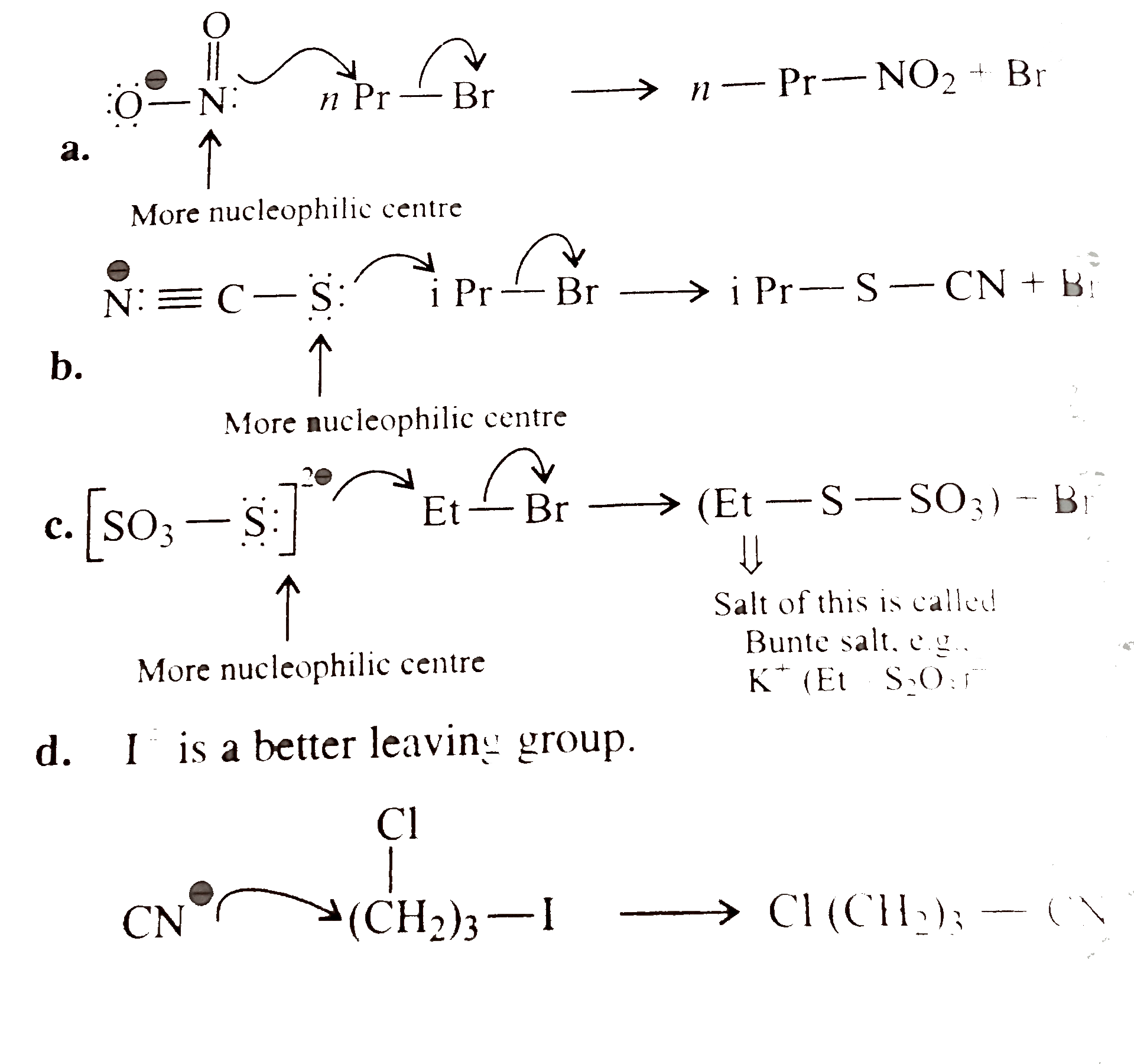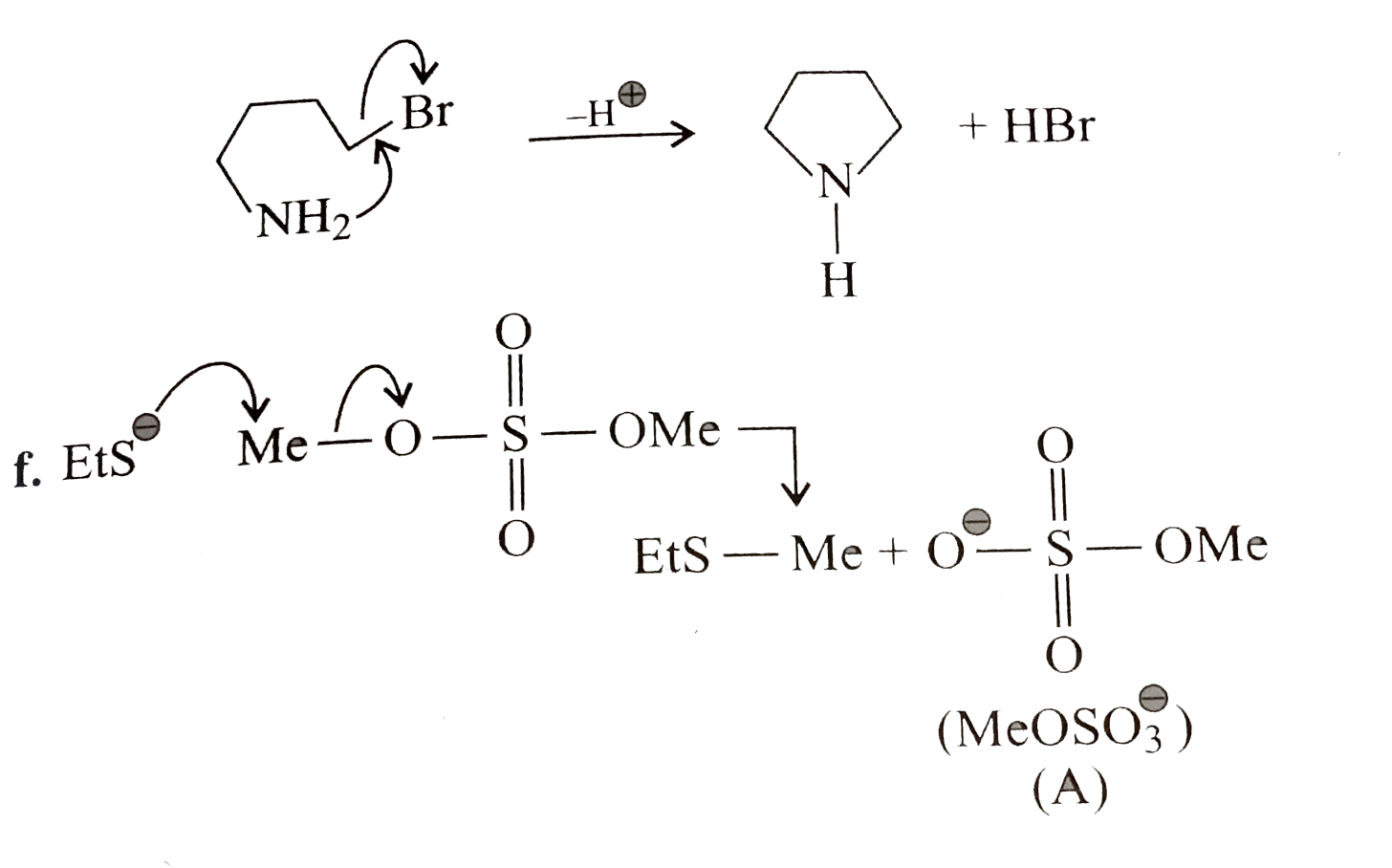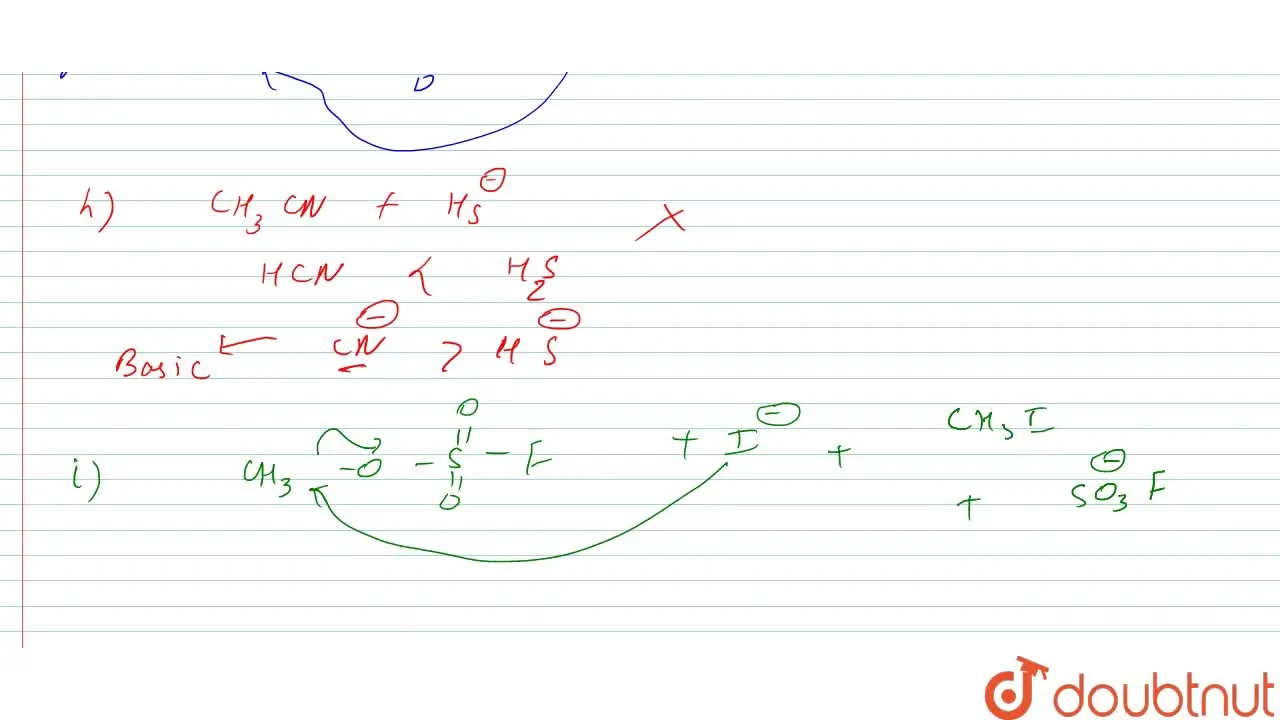Give the organic products of the following reactions :
(a) nPrBr+:O:∣∣N..−..O..:Θ
(b) i−Pr−Br+∣∣:..S..C≡N:∣∣Θ(Isocyanate)
(c) Et−Br+∣∣:..S..−SO3∣∣2Θ(Thiosulfate)
(d) C1(CH2)3I+CNӨ (One mole each)
(e) H2N(CH2)4Br−H⊕−−−→.
(f) Me−O−O∣∣S∣∣O(Dimethyl sulphate)−O−Me+EtSΘ→
(g) MeONO2(Methy1 nitrite)+NӨ3(FromNaN3)→
(h) MeCN+HSӨ→
( i) Me−O−O∣∣S∣∣Methyl fluorosulfonate−F+IΘ→.
The nucleophiles in (a),(b) and (c) are ambident, therefore, the nucleophilic centre reacts more, even though the other atom bears a negative charge.
(a) 
( e) When the nucleophile and the leaving group are part of the same molecule, an intramolecular displacement occurs it a three-, five-, or six-memebered ring is formed.

(A) is a good leaving group because of the very weak conjugate base of a strong acid (MeOSO2OH)- the kin of H2SO4
(g) 
(B) is a good leaving group because of the very weak conjugate base of a very strong acid (HNO3).
(h) No reaction.
H2S is a stronger acid than HCN
NSӨ is a weaker conjugate base (CB) of H2S
HSӨ is a weaker (CB) than CNӨ .
A weaker base cannot displace a stronger base.

C is the weakest conjugate base of the strongest acid (FSO2.OH) (fluoro sulphurous acid).
IӨ is a stronger nucleophile but a weak base, and is stronger than (FSOӨ3) .
Related Playlists
- BOOK - CENGAGE CHEMISTRYCHAPTER - ORGANIC REACTION MECHANISMEXERCISE - Solved Example33videos
ORGANIC REACTION MECHANISM
- BOOK - CENGAGE CHEMISTRYCHAPTER - ORGANIC REACTION MECHANISMEXERCISE - Subjective19videos
ORGANIC REACTION MECHANISM
- BOOK - CENGAGE CHEMISTRYCHAPTER - NCERT BASED EXERCISEEXERCISE - Chemical Equilibrium72videos
NCERT BASED EXERCISE
- BOOK - CENGAGE CHEMISTRYCHAPTER - P-BLOCK GROUP 13 - BORON FAMILYEXERCISE - Exercise Archives (Subjecive)9videos
P-BLOCK GROUP 13 - BORON FAMILY
Similar Questions
The major product formed in the reaction is:
CH3−CH3∣C∣H−CH2BrCH3OӨ−−−−→CH3OHView SolutionWhat is the major product of the following reaction ?
CH3−C≡NCH3MgI−−−−→Et2OH3O⊕−−−→View SolutionThe major product of the following reaction is :
C6H5CH2−CH3∣C∣Br=CH2−CH3C2H5ONa−−−−−→C2H5OHView SolutionMajor product of the given reaction is
CH3−CH3∣C∣CH3−CH∣CI−CH3C2H5O−−−−−−→View SolutionNumber of organic products formed in following feaction.
H−C∣∣O−O∣∣C−C∣∣O−HNH2−NH2−−−−−−→excessView SolutionPh−⋅⋅N(X)H2,Ph−−..N∣Ph(Y)Ph:(H)..N∣−Ph,Ph−(Z)
View SolutionIn the following reaction C is, CH3−CH=CH2+ HCl
Organic−−−−−−→PeroxideAAg2O−−−−−→MoistBEt MgBr−−−−→CView SolutionThe major product formed in the reaction
CH3−CH3∣C∣CH3−CH2..C..l:Ag+−−−−−→H2O
isView SolutionIdentify the product in following reaction
CH3−CH3∣C=C∣H−CH3D2O/D⊕−−−−−→View SolutionComplete the following chemical reactions
CH3−CH3∣C∣CH3−OHH2SO4−−−−−−→heat?Underset(Ozonolysis)O3−−→?H2/Ni−−−−−−→heat?View Solution


